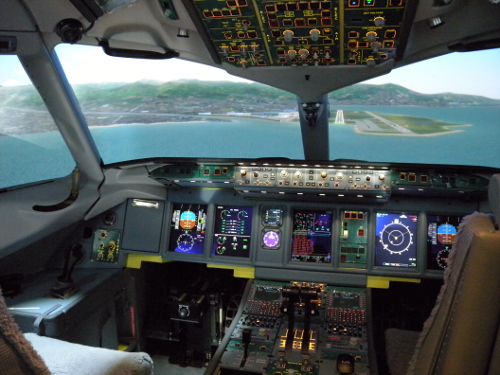Emulation vs simulation – what is the difference?
In everyday speak, the terms simulation and emulation are often used interchangeably. But there is a difference, and when it comes to automation that difference is quite big.
If you’re not an expert, these terms can be quite confusing. What is the difference between simulations and emulations? Well, let’s try to clarify it.
Both terms cover the act of mimicking a real thing in a virtual environment. The difference lies in the details – quite literally.
A simulator copies something from the real word into a virtual environment – often to give you an idea about how something works. It simulates the basic behavior but doesn’t necessarily abide to all the rules of the real environment that it simulates.
A flight simulator is a well-known example – it feels like you’re flying an airplane but in reality, the simulation is completely disconnected from any part of flying an actual airplane.
An emulator, on the other hand, duplicates the thing exactly as it exists in real life. The emulation is efficiently a complete imitation of the real thing – it just operates in a virtual environment instead of the real world.

A flight simulator
Emulation vs simulation of automation systems
In the automation industry, both simulation and emulation is used when designing, commissioning and operating automation systems in e.g. factories, distribution centers and airports.
The essential difference is in the control system that controls the simulated automation system.
An emulation model of an automated tire factory
A simulation model has the necessary controls detailed internally – depending on the objective of the simulation, e.g. visualizing the overall behavior of the automation system, analyzing different systems configurations or verifying specific system design.
An emulation model operates in a hardware-in-the-loop configuration with real controls.
The emulation model is connected to an external control system that controls the model as it would control the real automation system.
This allows for functional tests of the control system – for instance virtual commissioning prior to commissioning the real system on site. The virtual commissioning approach ensures short commissioning time, steep ramp-up and a stable operation from the very beginning.
Emulation can be performed on both low and high level. Low level emulation (LLE) is used to test lower level controls such as PLC codes, while a high level emulator (HLE) already has the low level controls detailed internally, so it can be used to test high level controls such as material flow controls, WCS and WMS.
To be able to run realistic tests of the control system, the emulation model must accurately represent the real automation system in great detail and rarely run faster than real time.
On the other hand, simulation models don’t need to be as detailed, and they are only useful if they can run many times faster than real time.
A one-stop platform for both emulation and simulation
Thus, there is no definite answer to the question emulation vs simulation – the two have very different applications.
As one of the only tools on the market, Experior therefore provides the opportunity to run both emulations (LLE and HLE) and simulations of automation systems on one and the same platform.
Learn more about Xcelgo’s software platform for 3D modelling of automation systems Experior here and learn more about the different applications of Experior here.
